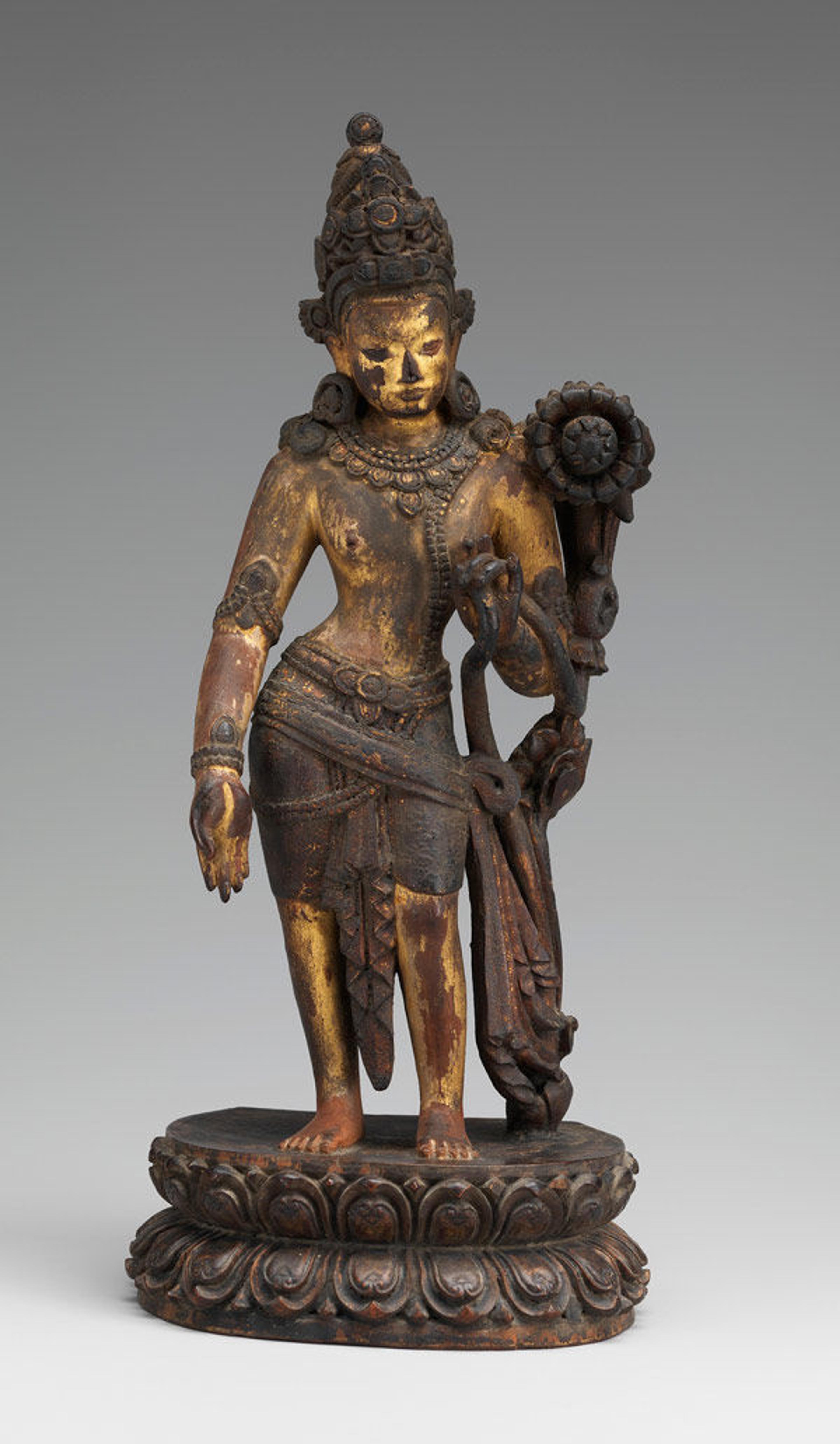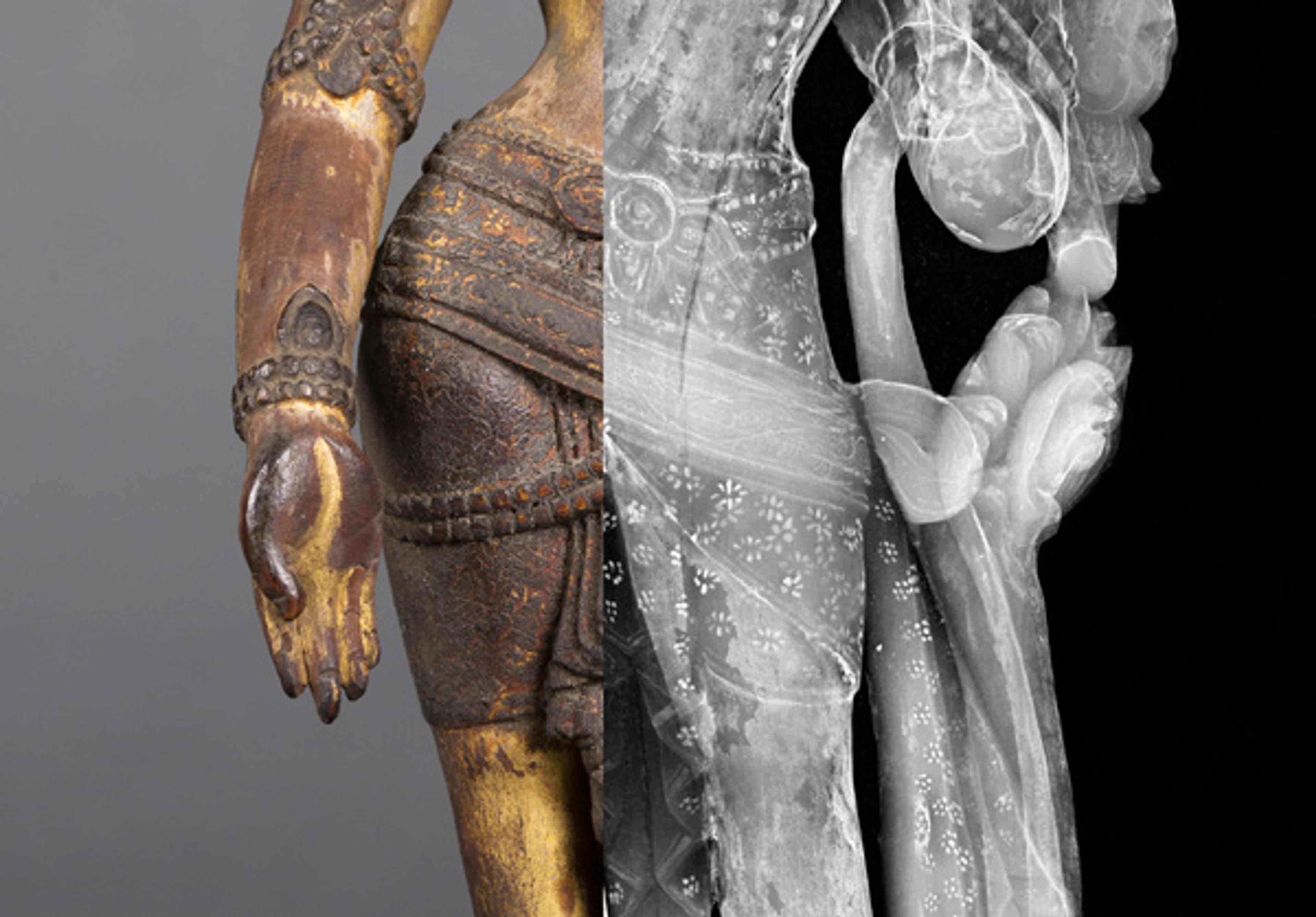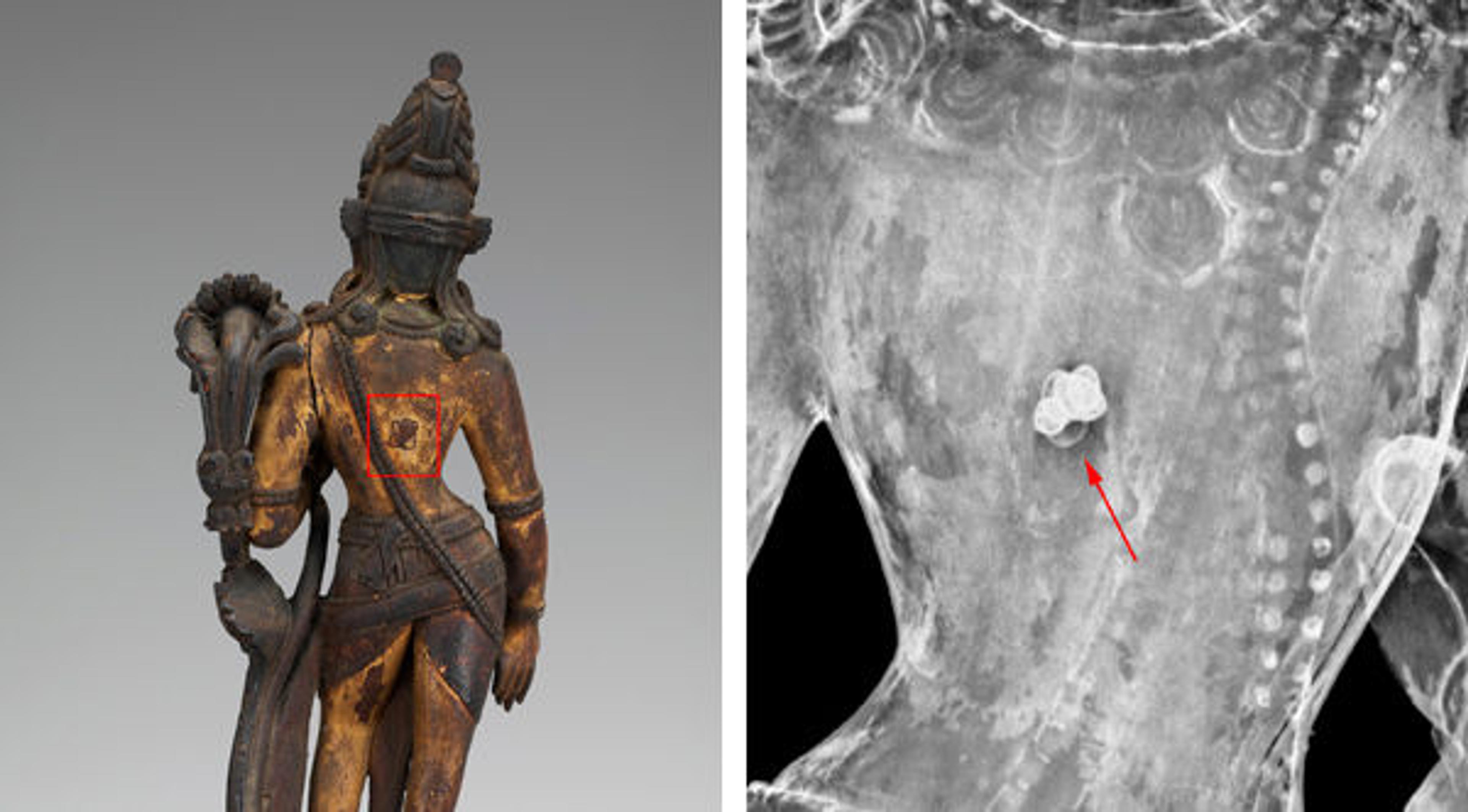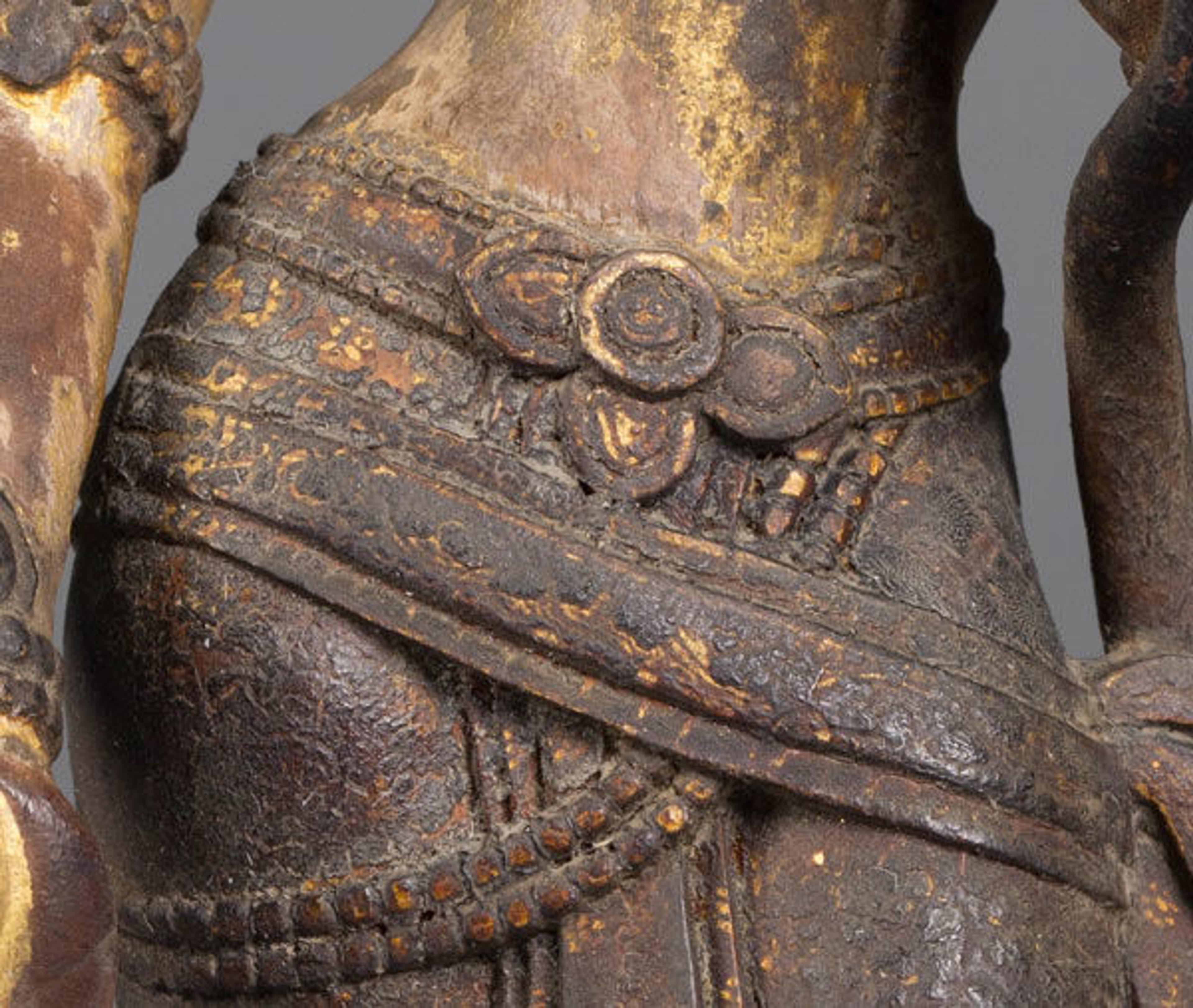
Fig. 1. Standing Avalokitesvara, 16th century. Nepal (Kathmandu Valley). Sandalwood, gold, traces of polychromy; H. 6 in. (15.2 cm). The Metropolitan Museum of Art, New York, Rogers Fund, 1947 (47.108)
«This beautiful image of the bodhisattva Avalokitesvara holds a lotus as his principal attribute (fig. 1). On view in the exhibition Sacred Traditions of the Himalayas, the gilded figure and its lotus-inspired pedestal are made of a single block of sandalwood, a wood species that holds spiritual meaning throughout Asia. The exceptional carving found here is a rare surviving example of a Nepalese tradition with a long history, one which ultimately can be traced back to India.»
The figure's features, garments, jeweled crown, necklace, bracelets, and armlets were partly highlighted with polychromy that has faded over time, and some of the fine embellishments of his luxurious attire even mimic textile patterns found in elaborate cast bronzes. Even though barely visible to the naked eye, the full extent of these designs can be discerned with the help of X-ray radiography, as the high radiopacity of the pure gold of the delicate flower petals on his dhoti stand out clearly in the captured image (fig. 2, right).

Fig. 2. Left: Detail of garment showing an area where the gilded floral pattern is still preserved. Right: Radiograph of the Standing Avalokitesvara revealing the delicate flower petals of its dhoti
Technical examination using UV-fluorescence microscopy suggested that the artist employed two different gilding techniques, which was subsequently confirmed through material analysis in the Museum's Department of Scientific Research. The figure's skin was prepared with water gilding over a thin, light-colored layer of clay to create a continuous gold surface. On raised elements such as the crown, lotus flower, garments, and base, gold leaf was sandwiched between two layers of oil-resin varnish, giving these elements a glossy appearance. Using a different technique, a gold floral pattern was produced on the figure's dhoti (fig. 2, left). Also making use of the warm-colored sandalwood substrate, the artist was able to give different surfaces distinctly contrasting appearances.
Radiographic analysis also revealed materials in the figure's chest that suggest the object had been consecrated and used in worship. The unidentified items in his chest are shaped like small disks, and a plug in the back delicately hints at their presence. It was only with X-ray photography that we became aware of their existence (figs. 3–4).

Left: Fig. 3. Back of the figure with plug hinting the presence of consecration material (red frame). Right: Fig. 4. X-ray radiograph detail of consecration material in the shape of small discs (arrow)
As this Avalokitesvara had not recently been on display, conservation work was required to prepare it for the Sacred Traditions exhibition. The water gilding over most of the body had become fragile and required stabilization. More problematic were the varnish layers covering most of the raised decoration that had degraded into a brown opaque crust concealing many of the fine gilded details (fig. 5). Unfortunately it was not possible to reverse the darkening of the varnish, nor could this crust be reduced or removed without harming the underlying gold decoration. In this respect, the X-ray images reveal and document aspects of how the figure was originally conceived which would not be apparent otherwise.

Fig. 5. Detail of garment showing the degraded varnish (brown opaque crust) concealing the fine gilded details
View all blog articles related to Sacred Traditions of the Himalayas.
Follow the conversation: #SacredTraditions
The authors wish to thank Adriana Rizzo, associate research scientist in the Department of Scientific Research at the Met, for her help and expertise during the technical analysis.
The Collaborative Fellowship Pilot Program for Indian Conservators is supported at The Metropolitan Museum of Art and SRAL by grants from The Andrew W. Mellon Foundation.